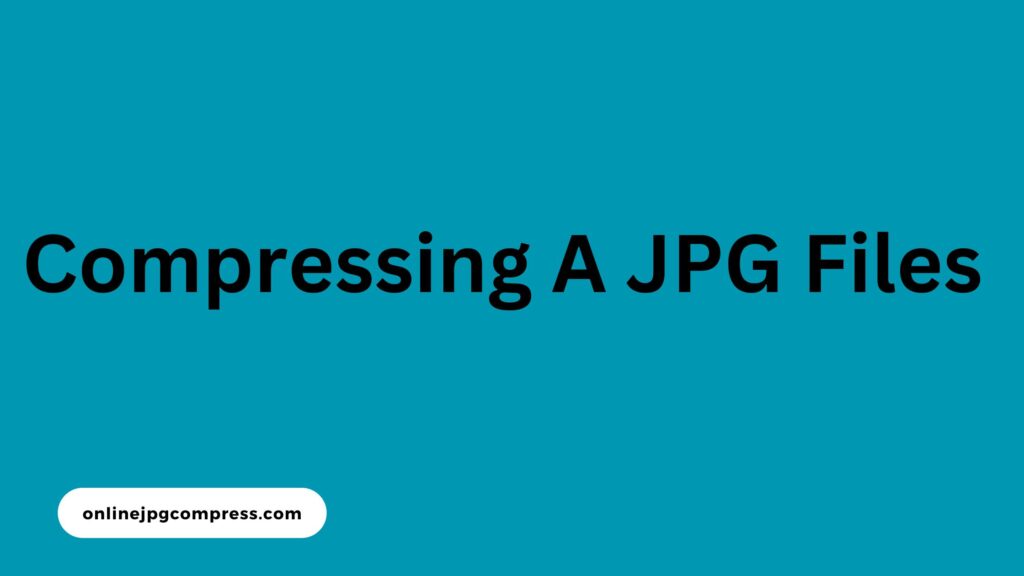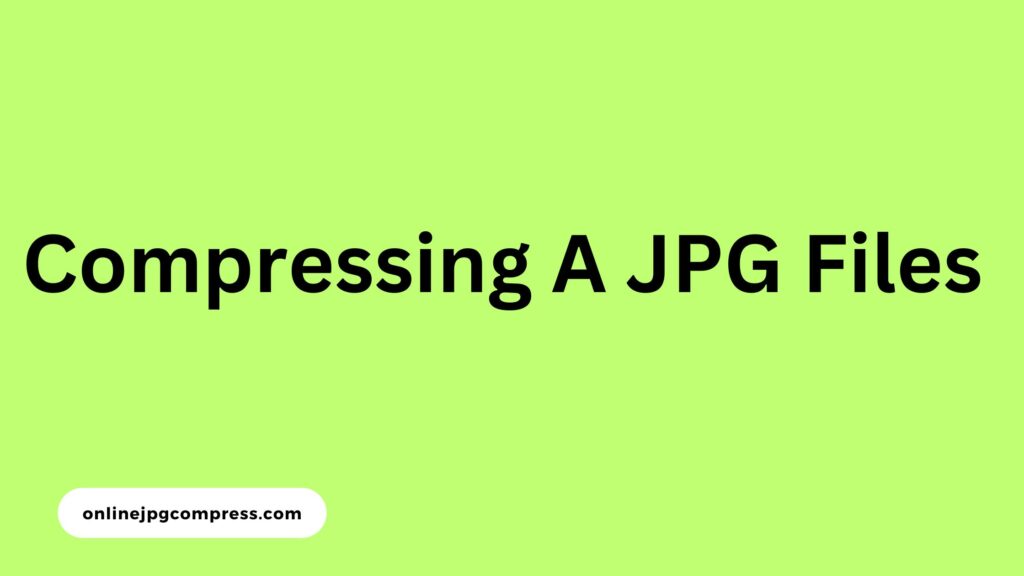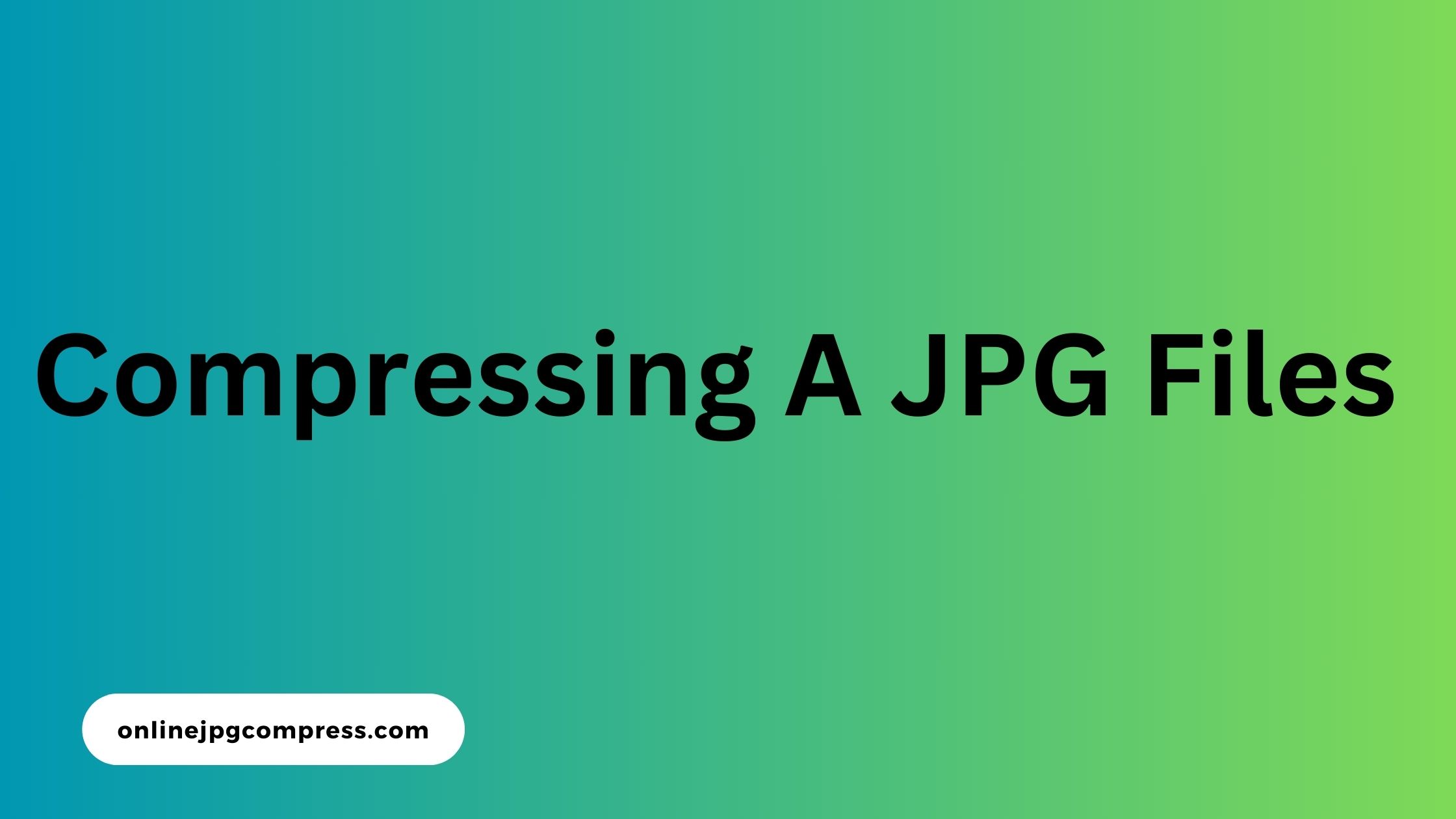In the fast-paced Compressing A JPG Files digital landscape of the United States, where visual content reigns supreme, the efficient management of file sizes is a critical aspect of online success.
This comprehensive guide will unravel the intricacies of, why it matters, and practical methods for users across the United States.
Read this – Picture Perfect: Mastering JPG Photo Compression for Optimal Impact

The Essence of Compressing A JPG Files
Efficient Digital Footprint: Compressing JPG files is all about maintaining optimal image quality while reducing file sizes.
In an era where user attention is scarce, ensuring a streamlined and efficient digital footprint is essential. Compressed JPG files contribute to faster loading times, improving the overall user experience.
Bandwidth Optimization: Given the diverse internet connectivity scenarios in the United States, bandwidth optimization is a strategic move.
Compressed JPG files translate to reduced data transfer, making it more accessible for users with varying bandwidth capacities to engage with digital content seamlessly.
Adaptability for Mobile Users: With the prevalence of mobile devices, the adaptability of visual content is crucial.
Compressed JPG files strike the right balance, ensuring that images look crisp and vibrant across various screen sizes. This adaptability is key for engaging mobile users without compromising quality.
Advantages of Compressing A JPG Files
Swift Website Loading: The primary advantage of is the acceleration of website loading times.
In a society accustomed to instant access, a website that loads quickly enhances user satisfaction, reduces bounce rates, and encourages prolonged engagement.
SEO Boost: Search engines prioritize fast-loading websites. contributes to improved loading speed, positively influencing SEO rankings.
This, in turn, enhances the visibility of digital content, attracting more visitors and expanding the reach of your online presence.
Space-Efficient Storage: For individuals and businesses managing a plethora of digital images, space-efficient storage is invaluable.
Compressing JPG files ensures that visual assets are stored optimally without compromising quality, allowing for organized and easily accessible digital asset management.
Practical Steps for Compressing A JPG Files
Online Compression Tools: Explore user-friendly online tools designed for. Platforms like Tiny PNG, JPEG-Optimizer, and Compressor.
Io offer intuitive interfaces. Users can upload images and receive compressed versions quickly and efficiently.
Desktop Software Solutions: Professional image editing software, such as Adobe Photoshop, provides advanced JPG compression options.
Users have the flexibility to manually adjust settings, catering to specific requirements and achieving a personalized approach to image optimization.
Integration with Content Management Systems (CMS): For website owners using platforms like WordPress, leverage JPG compression plugins.
Plugins such as mush and Short Pixel seamlessly integrate into CMS, automatically upon upload. This simplifies the optimization process for website visuals.

Conclusion
Compressing JPG files emerges as a strategic practice for individuals and businesses in the United States aiming for optimal digital performance.
By striking the right balance between image quality and file size, you contribute to faster loading times, improved SEO rankings, and efficient storage practices.
Whether you opt for online tools, professional software, or CMS plugins, integrating JPG compression into your digital workflow is a savvy move for effective visual presentation in the digital era.
